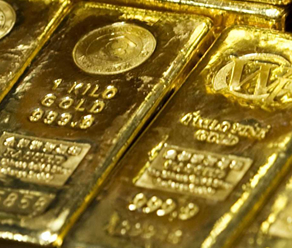Poor news for gold’s prospects from the World Gold Council (WGC) which revealed a noticeable fall in third quarter demand for the metal.
That was down mostly to a sharp fall in buying from India – driven by moves from the government to cut imports and try and take pressure off the currency and the trade account.
The Council said in its third quarter report that demand for the metal was 869 tonnes in the three months to September.
That was down 21% from the third quarter of 2012 and the lowest since the third quarter of 2009.
The Council’s demand data includes investor buying of bars, coins and exchange traded funds, as well as demand from the jewellery and electronics sectors and central bank purchases of the yellow metal.
Consumer demand – which includes jewellery, bars and coins – rose 6% to 791.tonnes from 749.2 in the same period a year ago, according to the Council’s quarterly report on supply and demand trends. In fact, year-to-date consumer sales are at a record pace, the WGC said.
Marcus Grubb, managing director for investment at the WGC, said that it was clear market sentiment had turned against gold this year, as the fall in world prices clearly shows.
Gold prices have risen every year since 2001, but at current prices of US$1,283 a troy ounce the precious metal is down 23% so far in 2013.
“It’s unlikely you’ll get the same kinds of returns we’ve seen in the last decade,” Mr Grubb said. “Technically the bull run is over because we are going to have a down year for the first time in 13 years.”
“The damage (to overall demand) has been done by the ETFs,” Mr Grubb said in the report.

Gold prices have risen every year since 2001, but at current prices of US$1,283 a troy ounce the precious metal is down 23% so far in 2013.
“But the response has been a big jump in jewellery and bar and coin demand all over the world, even with the restrictions (on gold imports) in India.”
In fact, the WGC pointed out, consumer demand for gold via jewellery, bars and coins for the first nine months of the year hit a record of 2,896.5 tonnes. This was helped along by lower prices that made gold more affordable for consumers.
“The vast bulk of the year-to-date growth in consumer demand for gold came from Eastern markets; 90% of the 605-ton increase was accounted for by Middle Eastern and Asian consumers, as gold continued to flow from West to East,” the report said.
Lower official demand from India helped drive demand for gold down in the quarter. India, which was the world’s largest consumer of gold, but will almost certainly be overtaken by China by the end of this year.
The series of government restrictions on gold imports has damaged official Indian buying and consumption, which fell 32% in the quarter to just 148 tonnes, the lowest since early 2009.
But Indian gold consumption has been clouded by a rise in imports, both reported and anecdotal. Mr Grubb said India’s demand for the year to date was in fact higher than last year, since Indian buying had been particularly strong in anticipation of the restrictions.
“We think official imports will come in around 800-850 tonnes for full year,” he said, predicting that a further 150-200 tonnes would be smuggled into the country.
Mr Grubb said the demand data confirmed the move to number one position by China.
The country was the world’s top consumer in the July-September period and is on pace to replace India as the leading buyer for the full year.
In the nine months to September, mainland Chinese gold demand was 797.8 tonnes, higher than 2012’s full year figure of 776 tonnes.
The Council said that overall third-quarter investment demand fell 56% to 185.5 tones. However, the Council pointed to a divergence, with ETF holdings falling for the third straight quarter while demand for bars and coins rose.
ETF holdings fell by 118.7 tones, a big reversal from the third quarter of 2012, when they rose by 137.8 tonnes However, the trend of outflows “lost considerable momentum” in the third quarter, as the bulk of tactical positions had already been closed during the wave of ETF redemptions in the second quarter, the WGC said. ETF outflows were listed at 402.2 tonnes in the second quarter and 176.5 in the first.
By the end of September, ETF outflows for 2013 were almost 700 tonnes, much of this in the second quarter when the price was falling sharply, the WGC said. This in turn was in large part due to speculation by investors that the Federal Reserve would start tapering the bond-buying program known as quantitative easing.
Meanwhile, third-quarter demand for bars and coins was up 6% year-on-year to 304.2 tonnes, the WGC report revealed.
For the year to September, demand for bars and coins was 1,252 tonnes, up 36% year on year.













